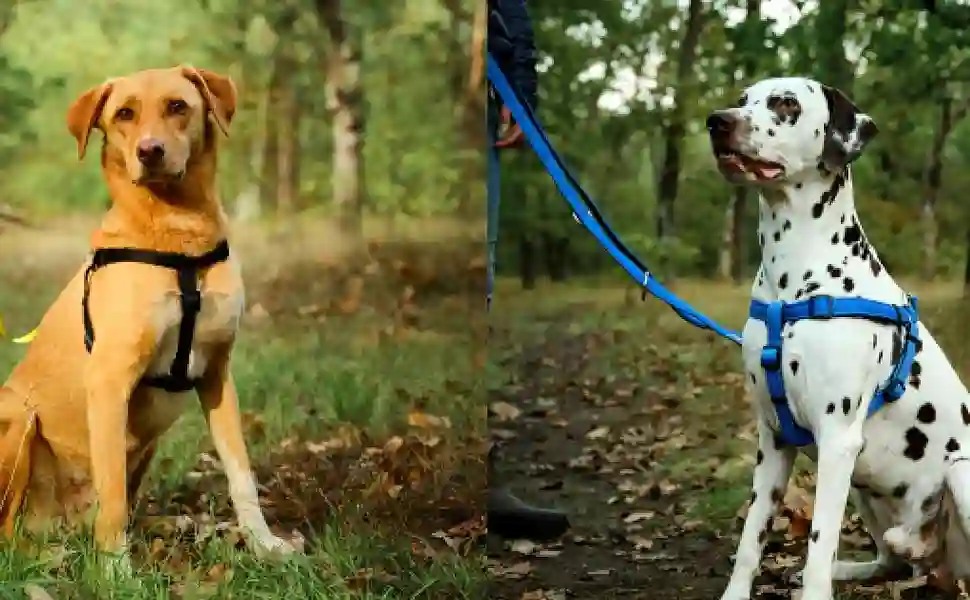Dog harnesses have become an essential tool for pet owners, providing a safer and more comfortable way to control and restrain their furry companions during walks and outdoor adventures. However, ensuring your dog’s safety while using a harness requires more than just purchasing one. A secure fit and proper usage are crucial to prevent accidents or discomfort for your pet. In this article, we’ll explore essential tips for achieving a secure fit and safe usage of dog harnesses.
1. Choose the Right Harness:
Before delving into the fitting process, it’s crucial to choose the right type of harness for your dog. Different breeds and sizes have varying needs and preferences. Consider the following factors:
- Size: Ensure that the harness is the correct size for your dog. Most harnesses come in various sizes, so measure your dog’s chest girth and refer to the manufacturer’s sizing guide.
- Purpose: Think about why you need the harness. Is it for walking, hiking, car travel, or training? Different harnesses are designed for different purposes, so select one that suits your needs.
- Material: Pay attention to the material and construction of the harness. For example, padded harnesses are more comfortable for long walks, while durable, rugged ones may be suitable for active dogs.
2. Properly Adjust Straps:
Once you’ve selected the right harness, it’s time to ensure a secure fit. Start by adjusting the straps properly:
- Chest Strap: Adjust the chest strap to ensure it fits snugly against your dog’s chest without being too tight. You should be able to fit two fingers between the strap and your dog’s skin.
- Back Strap: The back strap that runs along the spine should be snug but not overly tight. It should allow for natural movement without restricting your dog’s shoulder blades.
- Neck Strap: If the harness has a neck strap, it should be adjusted so it doesn’t press into your dog’s throat. Make sure it’s snug but not constricting.
3. Check for Chafing and Rubbing:
Regularly inspect your dog’s skin and fur for signs of chafing or rubbing. Improperly fitted harnesses can cause discomfort and skin irritation. Look for any redness, hair loss, or raw spots around the harness’s contact points. If you notice any issues, re-adjust the harness or consider trying a different style that is less likely to cause chafing.
4. Test the Harness for Escape-Proof Fit:
A properly fitted harness should be secure enough that your dog cannot easily slip out of it. To test this, try to gently pull the harness over your dog’s head without releasing any buckles. If it easily slips off, it may be too loose and needs further adjustment. Always ensure that the harness is properly secured before going on walks or adventures.
5. Introduce Your Dog Gradually:
Some dogs may not be used to wearing a harness, and it might take time for them to get comfortable with it. Start by letting your dog wear the harness for short periods around the house, gradually increasing the duration. Use positive reinforcement and treats to create a positive association with the harness. This will help your dog accept and even look forward to wearing it.
6. Monitor Your Dog’s Behavior:
Observe your dog’s behavior while wearing the harness. Pay attention to signs of discomfort, such as excessive scratching, rubbing against objects, or trying to remove the harness with their paws or teeth. If you notice any signs of distress, re-evaluate the fit and make necessary adjustments.
7. Properly Attach Leash and Accessories:
When attaching a leash to the harness, make sure it is connected to the designated D-ring or attachment point. Using the wrong attachment point can compromise the harness’s effectiveness and safety. Additionally, avoid adding excessive accessories or additional attachments to the harness, as these can create discomfort or interfere with the harness’s intended purpose.
Conclusion:
Ensuring the safety and comfort of your dog while using a harness is a responsibility that every pet owner should take seriously. By choosing the right harness, properly adjusting the straps, checking for chafing, and monitoring your dog’s behavior, you can provide your furry friend with a secure and comfortable fit. Remember that patience and positive reinforcement play a vital role in helping your dog become accustomed to wearing a harness. A well-fitted harness will not only keep your dog safe but also enhance your mutual enjoyment of outdoor activities and adventures.

